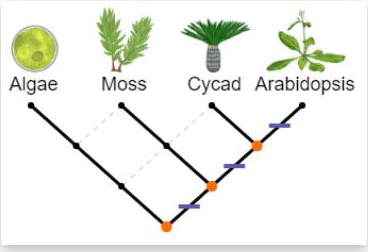Cladograms are essential tools in biological classification that help scientists visualize the evolutionary relationships among different organisms. They provide a graphical representation of how species are related through common ancestry. In this article, we will explore the cladogram se h gizmo answer key c-d, its significance in understanding evolutionary biology, and how it can be effectively used in various educational settings.
What is a Cladogram?
A cladogram is a branching diagram that depicts the evolutionary relationships between different species or groups based on shared characteristics. Each branch point, or node, represents a common ancestor from which two or more descendants diverge. Cladograms are constructed using various data, including morphological traits, genetic information, and behavioral characteristics.
In the context of the cladogram se h gizmo answer key c-d, it serves as a practical tool for students and educators to understand how to interpret and create cladograms effectively. This gizmo often includes interactive elements that allow users to manipulate and visualize evolutionary trees, providing a hands-on learning experience.
Importance of Cladograms in Biology
Cladograms play a crucial role in modern biology for several reasons:
- Visualizing Evolutionary Relationships: Cladograms help scientists and students visualize the complex relationships between species, making it easier to understand how organisms have evolved over time.
- Facilitating Classification: By organizing species based on their evolutionary history, cladograms aid in the classification of organisms, allowing scientists to categorize species more accurately.
- Identifying Common Ancestors: Cladograms illustrate common ancestors, helping researchers trace back the lineage of various species and understand their evolutionary pathways.
- Enhancing Learning: The interactive nature of tools like the cladogram se h gizmo answer key c-d enhances the learning experience for students, making complex concepts more accessible and engaging.
How to Use the Cladogram Se H Gizmo Answer Key C-D
To effectively utilize the cladogram se h gizmo answer key c-d, follow these steps:
1. Familiarize Yourself with Cladogram Basics
Before diving into the gizmo, it’s essential to understand the basic components of a cladogram. Learn about nodes, branches, and the significance of shared characteristics. This foundational knowledge will enhance your understanding of how to interpret the diagrams created within the gizmo.
2. Explore the Interactive Features
The cladogram se h gizmo answer key c-d often includes interactive features that allow users to manipulate the diagram. Spend time exploring these features, adjusting the characteristics of different organisms to see how they impact the overall cladogram. This hands-on approach will deepen your understanding of evolutionary relationships.
3. Analyze Sample Cladograms
Use the gizmo to analyze sample cladograms. Look for patterns in how species are grouped and consider the characteristics that define each group. This analysis will provide insight into the classification process and the underlying evolutionary principles.
4. Create Your Own Cladograms
One of the most valuable aspects of the cladogram se h gizmo answer key c-d is the ability to create your own cladograms. Select a set of organisms, determine their characteristics, and build a cladogram based on your analysis. This process will reinforce your understanding of how to construct cladograms accurately.
5. Collaborate with Peers
Engaging with peers can enhance your learning experience. Discuss your findings, share your created cladograms, and compare interpretations. Collaborative learning fosters a deeper understanding of the concepts presented in the cladogram se h gizmo answer key c-d.
Applications of Cladograms in Education
Cladograms are widely used in educational settings to teach concepts of evolution and taxonomy. Here are some applications:
1. Classroom Activities
Educators can incorporate the cladogram se h gizmo answer key c-d into classroom activities. Students can work in groups to create cladograms for different species, encouraging collaboration and critical thinking.
2. Assessments
Teachers can use the gizmo to assess students’ understanding of cladograms and evolutionary relationships. By requiring students to create or interpret cladograms, educators can gauge their grasp of the material.
3. Research Projects
Students can utilize the gizmo for research projects focused on evolutionary biology. By creating detailed cladograms, they can present their findings in a visually engaging manner.
Conclusion
Understanding cladograms is essential for anyone studying biology, and the cladogram se h gizmo answer key c-d serves as an invaluable resource for students and educators alike. By exploring the intricacies of evolutionary relationships and classification through interactive tools, learners can develop a deeper appreciation for the complexity of life on Earth. Whether you’re a student, educator, or simply an enthusiast, utilizing the cladogram se h gizmo answer key c-d will enhance your understanding of evolution and the interconnectedness of all living organisms



